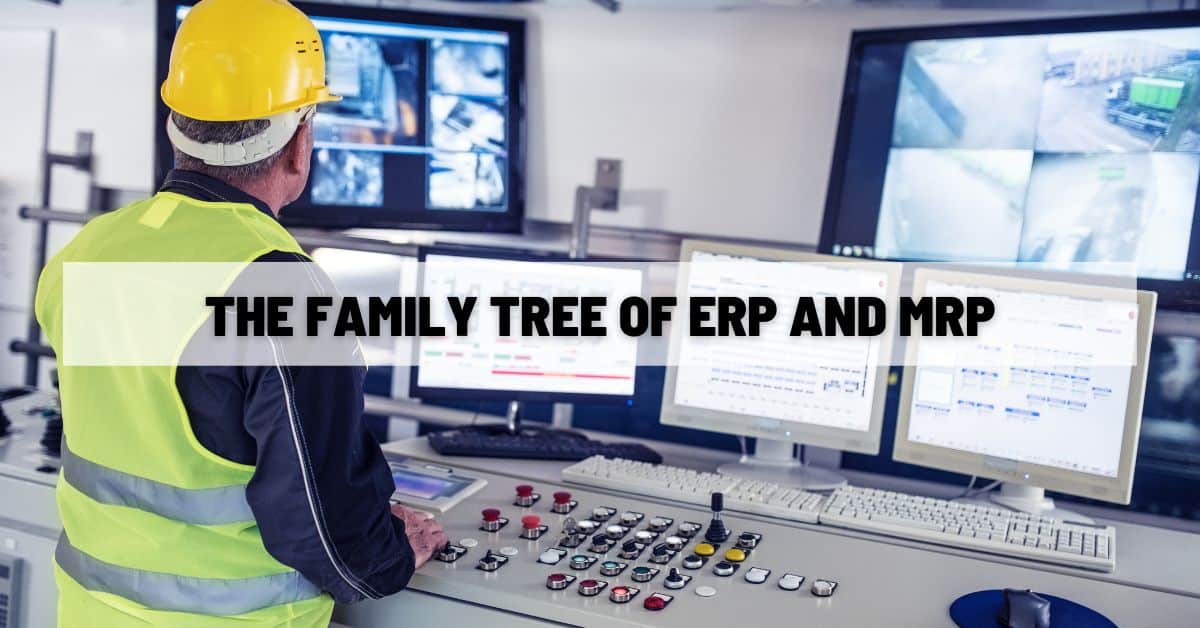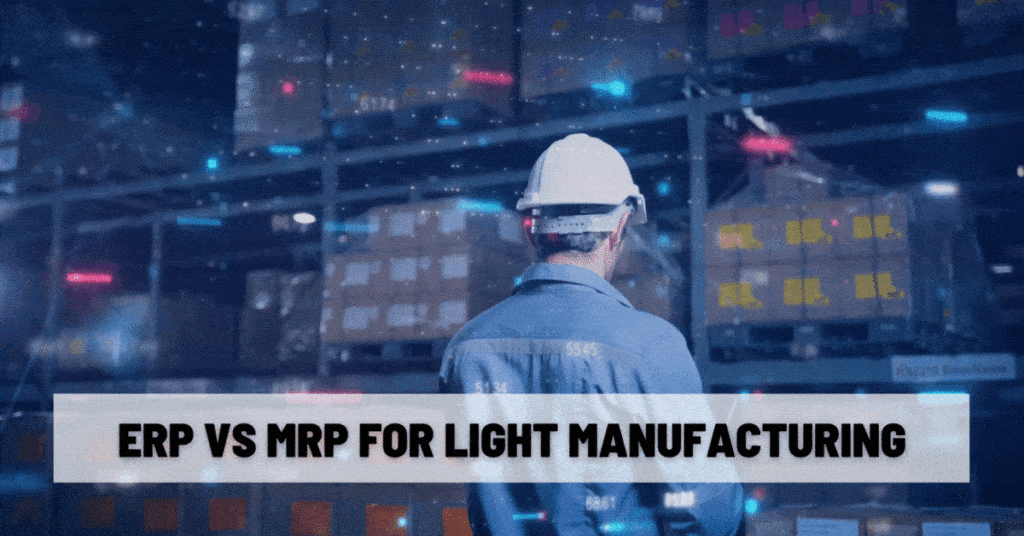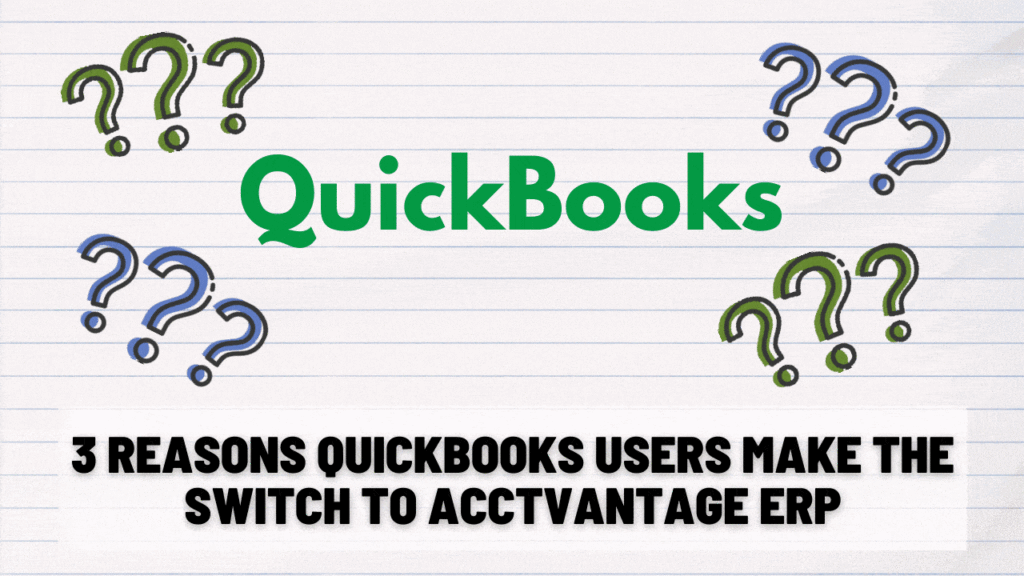ERP vs MRP for Light Manufacturing
The Future of Business Software
If you’re looking for software to help your growing business, you probably see a lot of letters thrown around.
ERP, MRP, SRM, CRM, etc.
It can be a frustrating exercise trying to get clear answers on what these things all are and how they differ from one another.
Let’s tackle one part of this puzzle that we get asked about a lot: ERP vs MRP.
Both ERP and MRP typically refer to categories of software systems designed to help you organize and optimize your day-to-day business operations.
The main difference is that MRP is specifically intended for manufacturers and focuses on solving problems unique to manufacturing. ERP, on the other hand, is useful for pretty much any business and integrates data from every arm of the company.
To get more specific than that, we’re going to need a quick history lesson.

The Family Tree of ERP and MRP
Let’s go on a quick mind journey. It’s 1960-ish. You own a factory and maybe a few warehouses.
You’re frustrated with the tools you currently have for managing, tracking, and controlling your inventory.
Somebody on your team suggests that computers are probably powerful enough to help with that nowadays. You’re skeptical, but you did just buy that new portable personal computer that’s small enough to fit in the back of a truck, so maybe they’re onto something.
You give the go-ahead.
Some time later, they come back to you with a program that can keep track of what you have in your inventory, tell you what you need to buy in order to fill a new order, and do a few other nifty tricks.
They call it Material Requirements Planning (MRP) software. It’s a little barebones at the moment, but they say it’ll grow, and it’s already pretty useful. You consider this a win and start using the software.
Over the next couple decades, more and more manufacturing companies start adopting MRP solutions, and the programs themselves keep getting expanded with new features.
By the 80s, MRP is kind of a whole new beast. It still does all the old good stuff, but now it handles your production scheduling, and it even does demand forecasting. It’s more of a “Manufacturing Resource Planning” tool now (and you even get to keep the initials MRP!). At this point, it’s hard to imagine your business without it. Your tech staff tell you that people are calling it MRP II.
In the 90s, somebody decided to stop limiting the scope of MRP to manufacturing processes. They designed an integrated software system that used all the techniques developed for MRP and applied it to the entire business.
This new type of system would take in data from the sales department, procurement, the factory floor, accounting, etc. and keep track of all of it.
Data would be seamlessly integrated and sent where it was requested.
The sales team could look up a customer and immediately see the status of their most recent order, while the accountants updated the payment information for that order on the fly.
And all of this information would propagate throughout the whole system in real time.
This new, broader, more integrated paradigm was named ERP (Enterprise Resource Planning).

Does Your Business Need ERP or MRP?
That’s all well and good, but what’s the practical difference for a modern small business owner?
Well, it might sound obvious, but the decision comes down to your particular business needs.
Pretty much every ERP system will have some degree of MRP functionality. It’s a natural result of ERP’s evolution.
The real question is usually whether you want a dedicated MRP system that doesn’t handle anything beyond manufacturing and inventory or an ERP system that pulls everything in the business together but might not have as robust a manufacturing-related featureset.
It’s really a call that no one else can make for you, but we can share a common trend we’ve observed over our years in the industry:
If a product brands itself specifically as an MRP system, it might be a big investment in a hyper-focused system when what you need is an integrated, business-wide solution.
The extra manufacturing functionality of an MRP system is vital for many traditional manufacturing businesses, but a lot of light manufacturing companies that buy MRP have some buyer’s remorse and don’t use most of the features specific to an MRP-only or MRP-first product.
For a light manufacturing business, the company-wide data sharing and large-scale operational streamlining usually does way more for the company and the people running it than a dedicated MRP system ever could. And, of course, this isn’t a strictly either-or decision.
If you’re researching this choice, the right option for your business is very likely an ERP system that contains all the MRP features you really need.
To find out how AcctVantage ERP can support your ongoing business growth and success, click here to get in touch with us.




